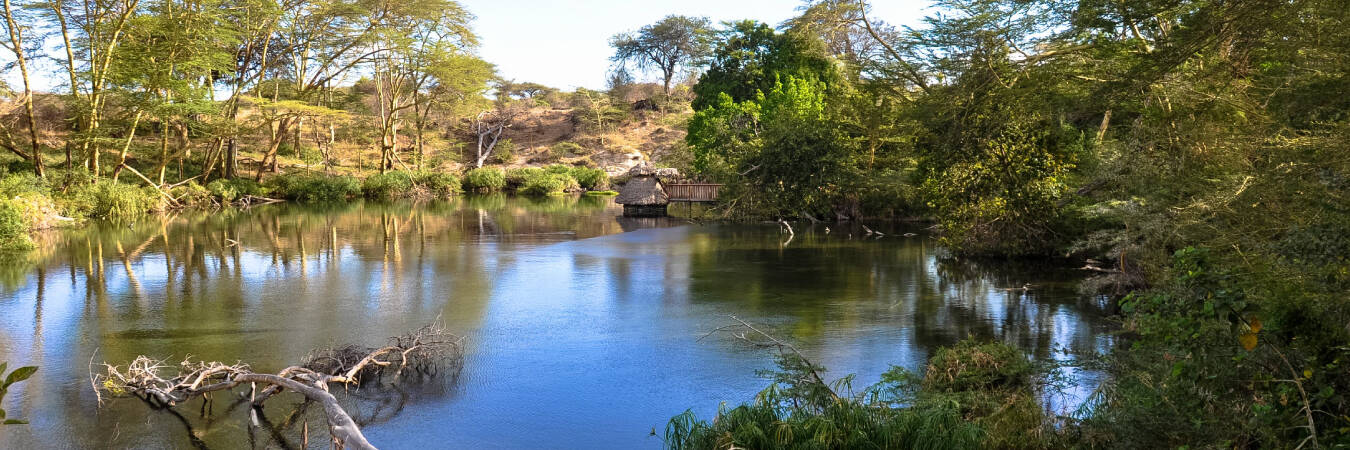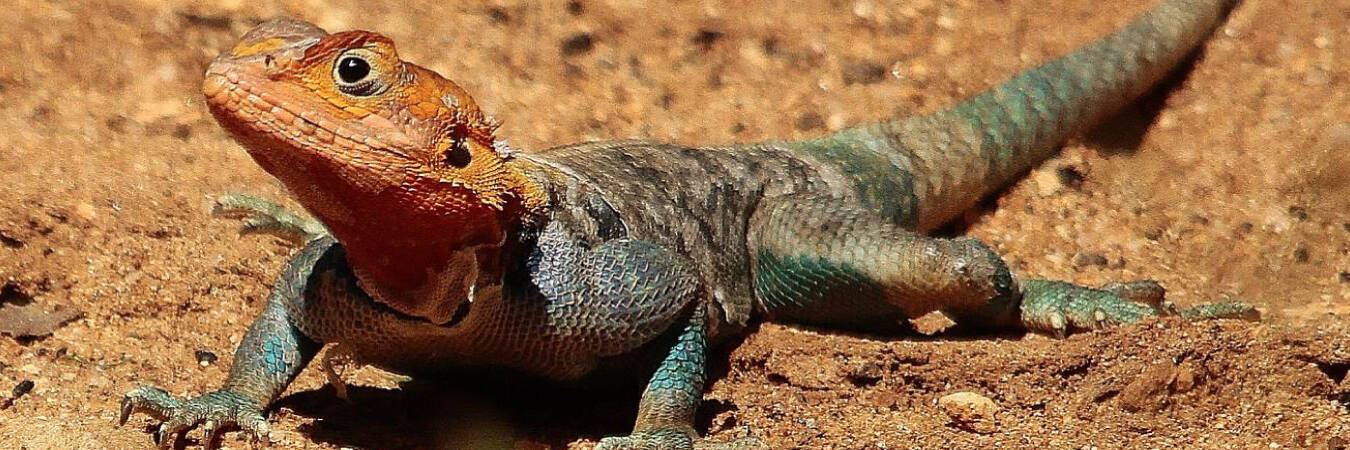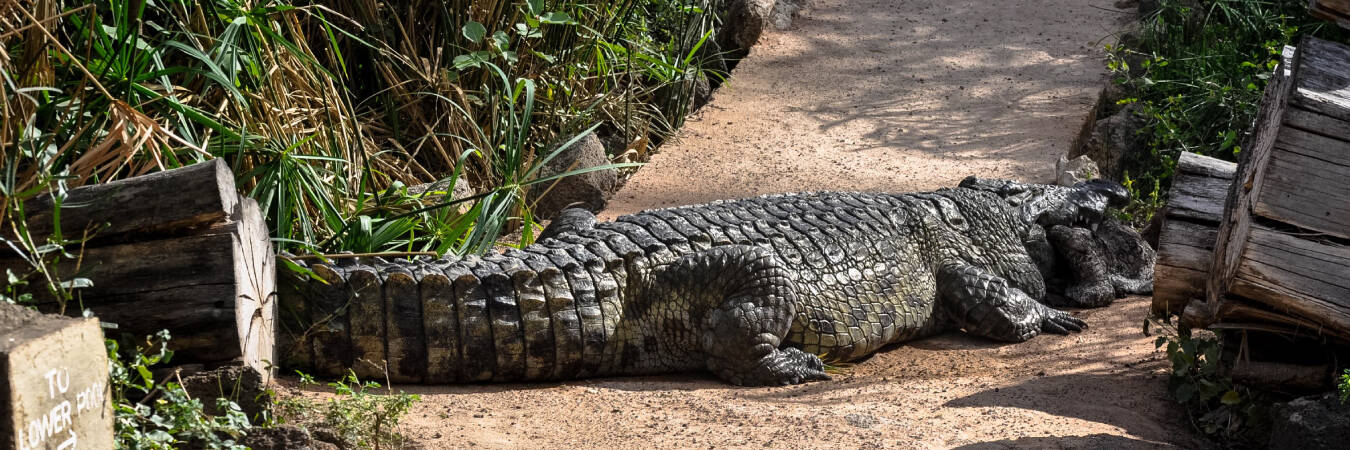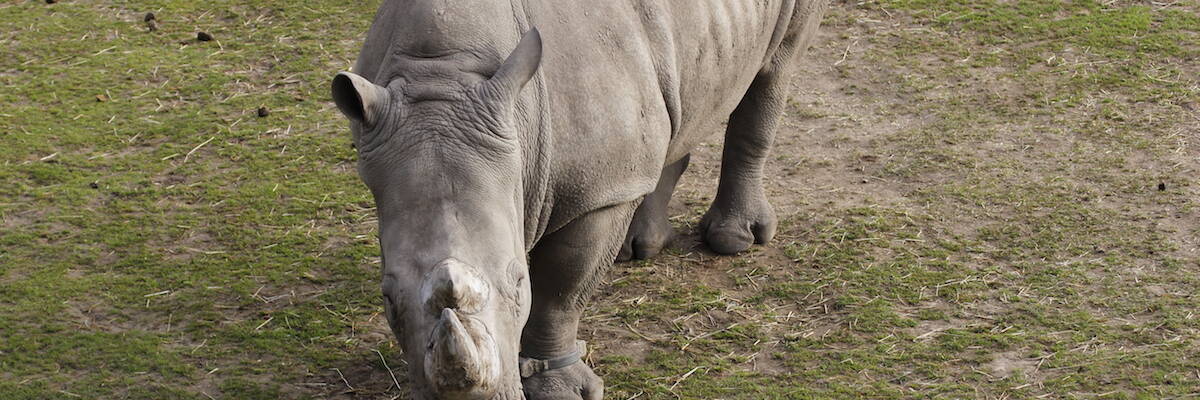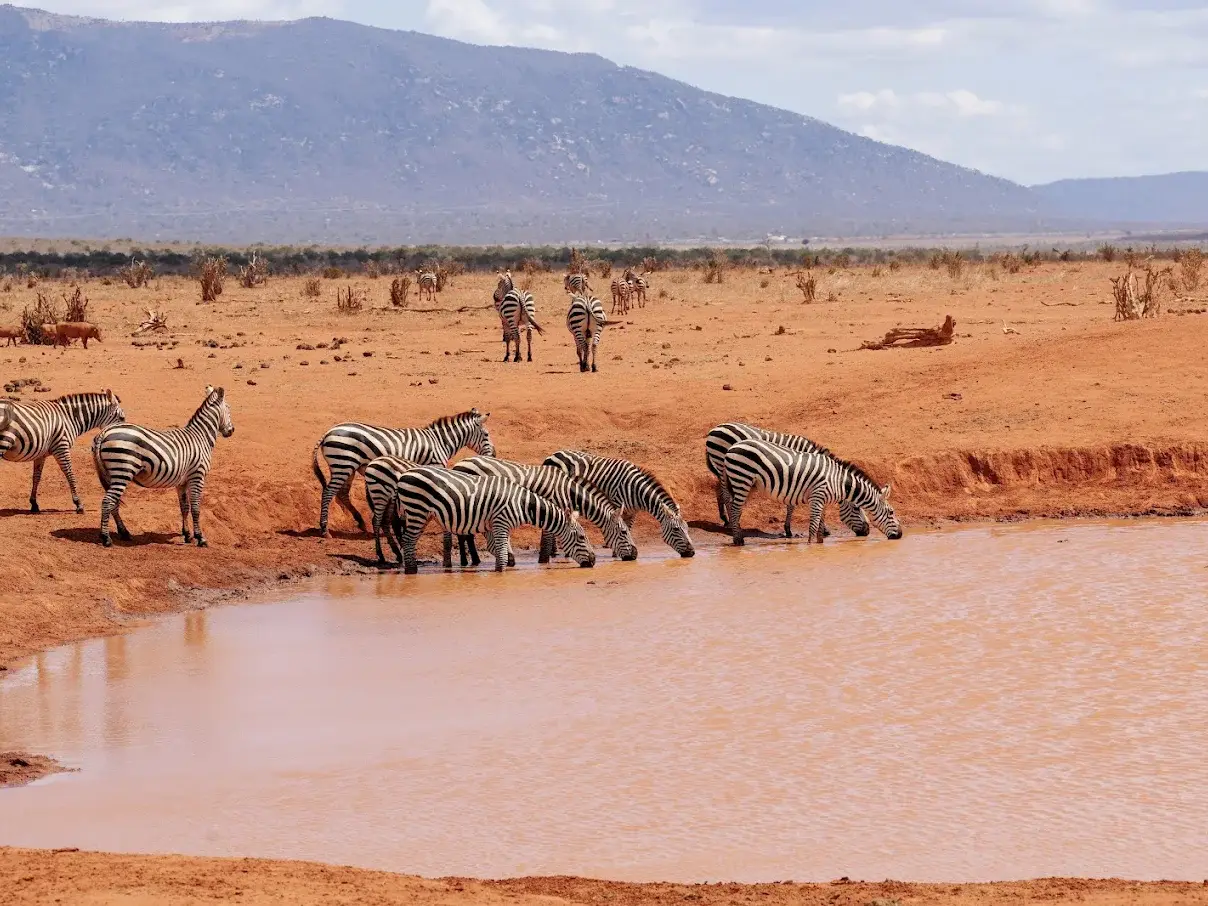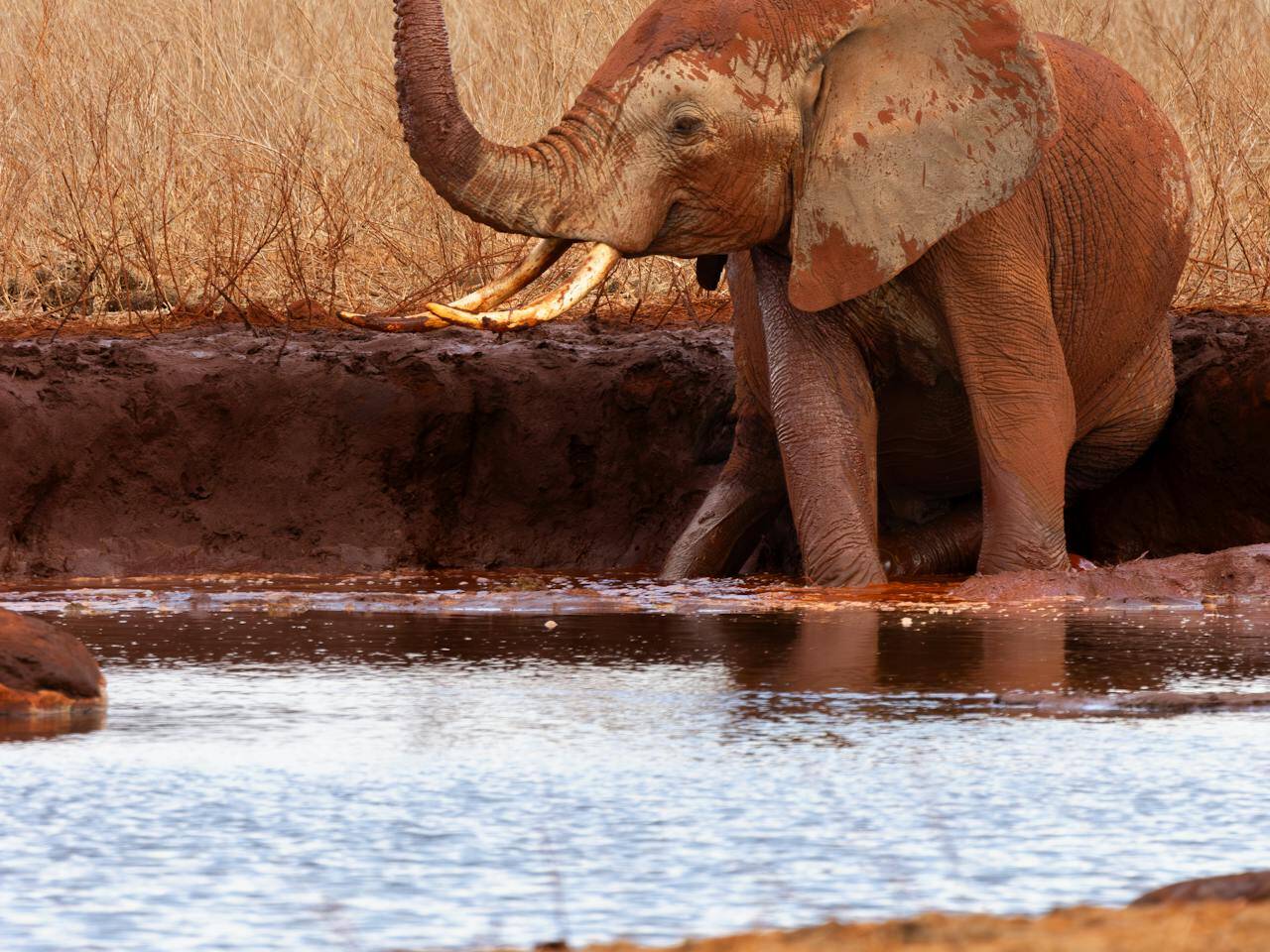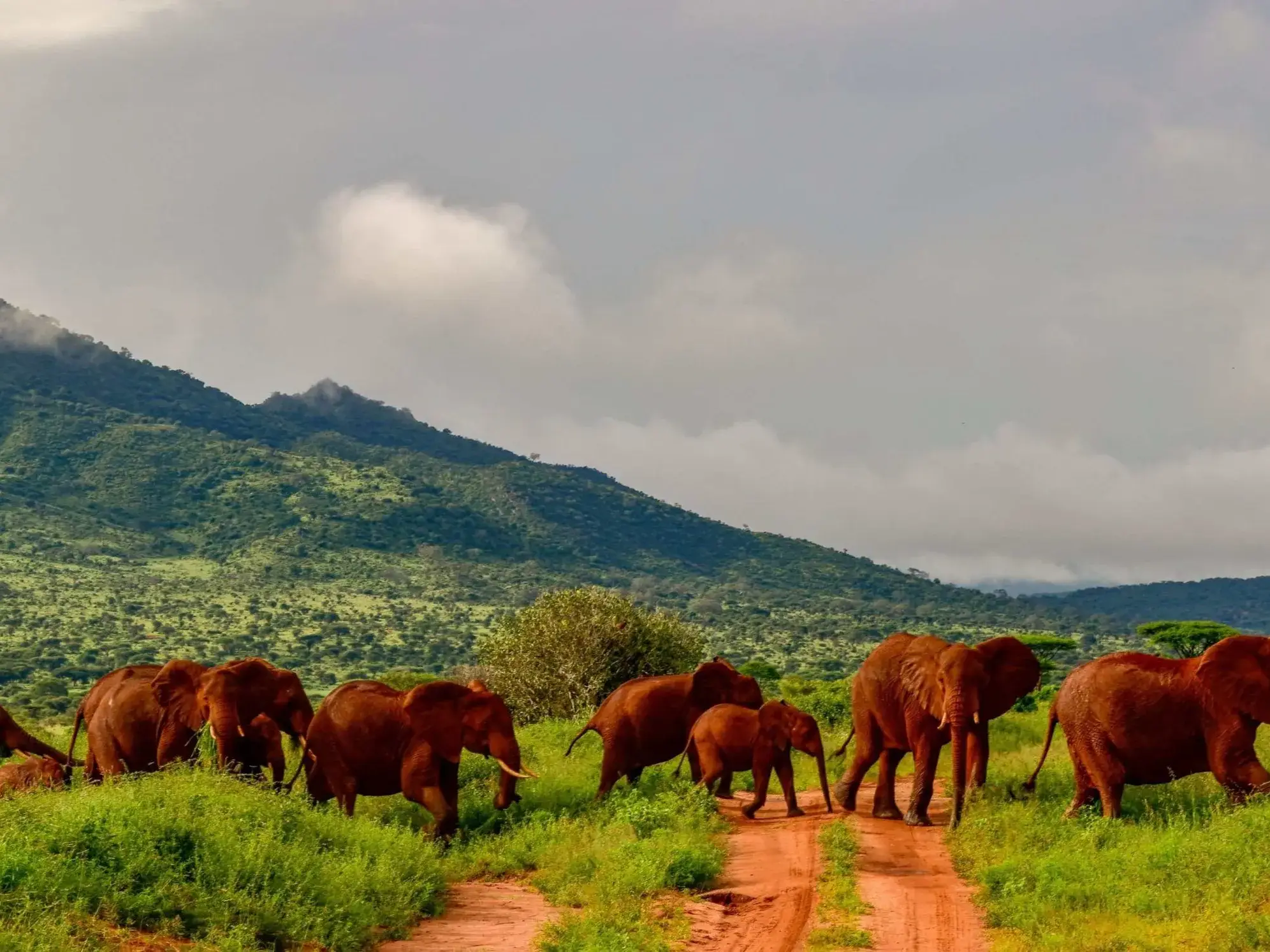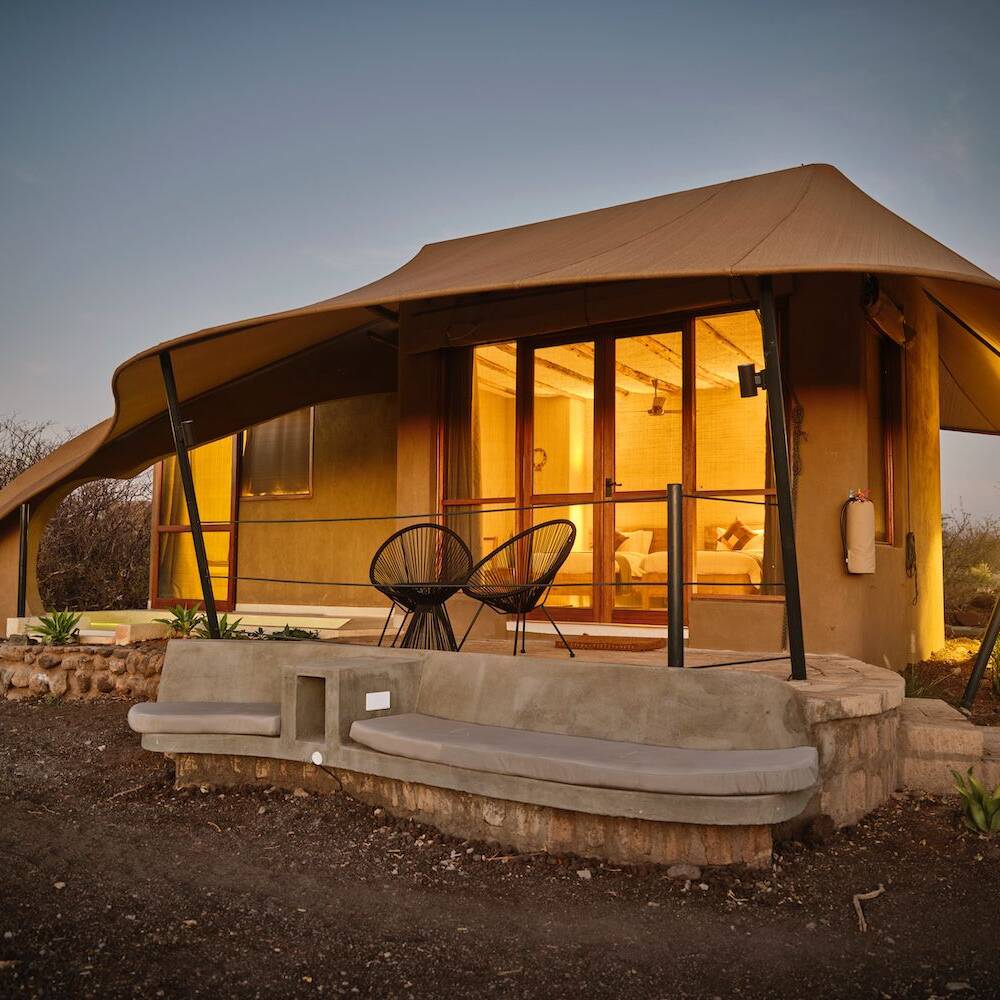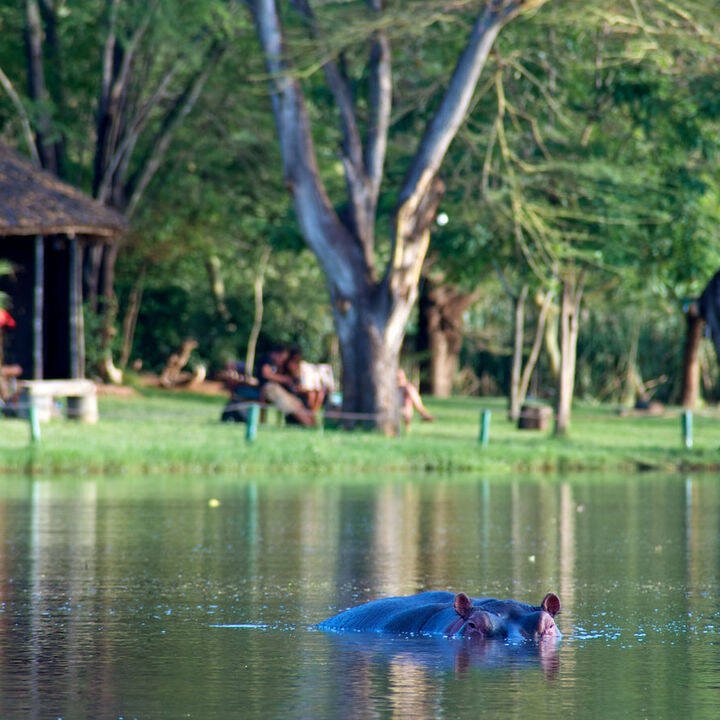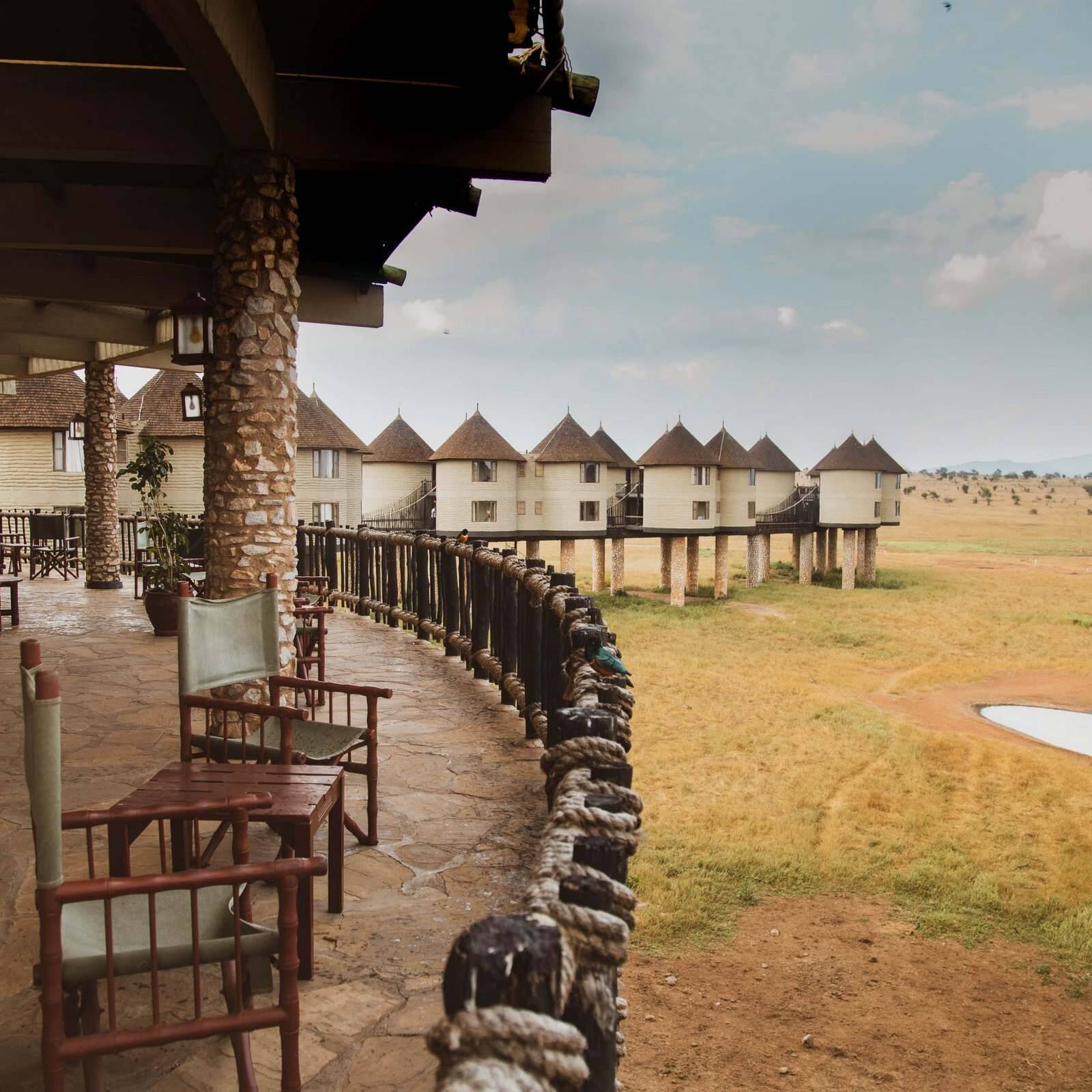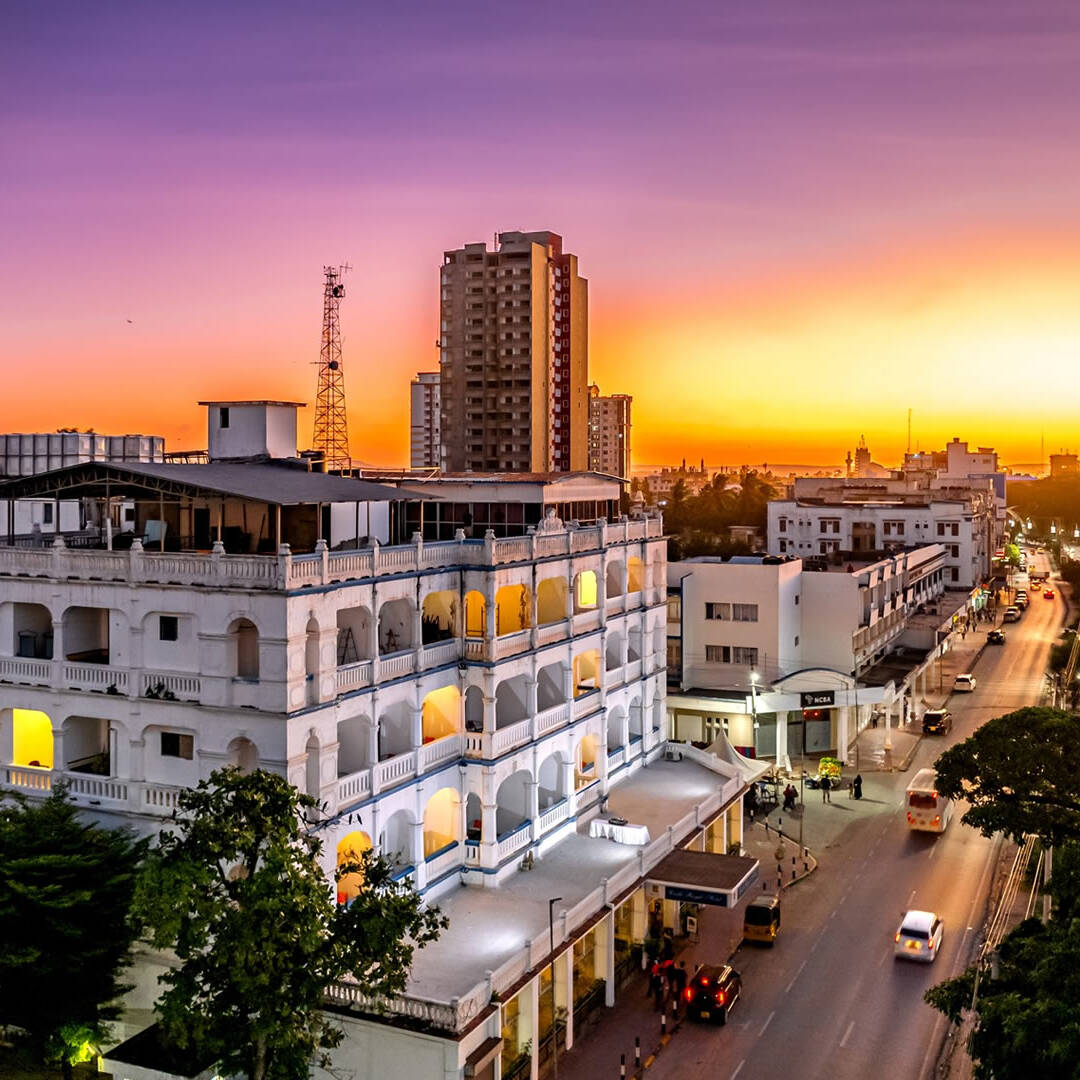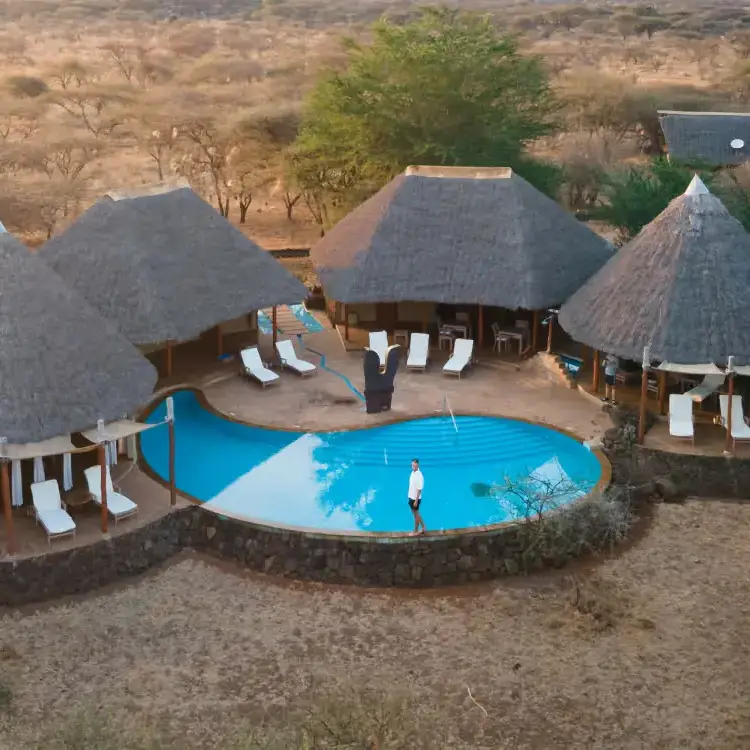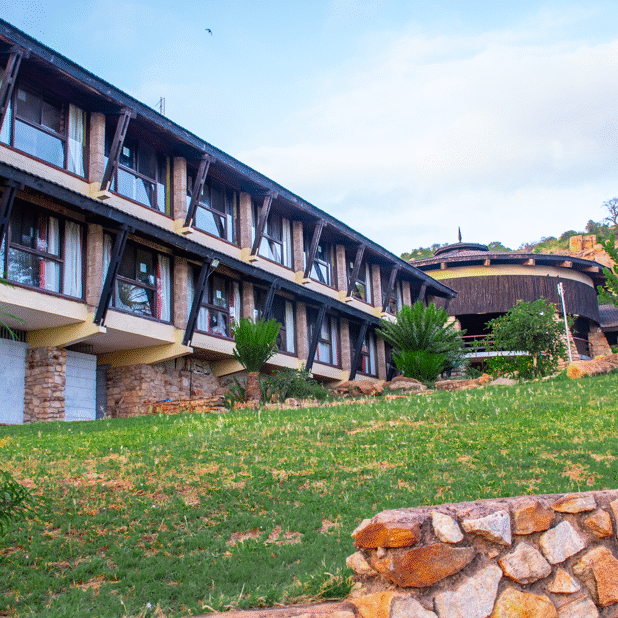Established in 1948, Tsavo West spans over 9,000 km², making it one of Kenya’s largest protected areas. Directly adjacent to larger Tsavo East & primarily accessed via the Mtito Andei Gate, the park is a major stronghold for wildlife, supporting a population of more than 7,000 elephants. Its freshwater springs sustain a notably dense hippo population, and the fenced Ngulia Sanctuary is home to more than 80 black rhinos—making it Kenya’s third-largest black rhino group.
Tsavo West distinguishes itself from its eastern counterpart through its diverse scenery. Volcanic hills above acacia-dotted woodlands, while expansive black lava fields create a unique and visually striking environment. Mzima Springs offers a standout visitor experience, featuring underwater viewing windows that allow for close observation of hippos and crocodiles in their natural habitat. Guided dawn walks in the Ngulia Sanctuary provide visitors with the rare opportunity to track black rhinos alongside experienced rangers.
Throughout the park, roads wind past palm-fringed oases and rocky outcrops, frequently home to lions surveying. On clear days, visitors are treated to stunning views of Mount Kilimanjaro on the horizon. Overall, Tsavo West is greener, more diverse, and offers a quietly compelling experience for those seeking something different.
Bush Walks
Ranger‑led walks on marked trails around Mzima Springs, Chaimu Crater, and Roaring Rocks. Participants observe sign and spoor of smaller mammals, encounter resident birdlife in the springs’ woodland, and ascend to panoramic viewpoints on the crater rim.
Night Drives
Conducted in designated concessions after dusk. Focus is on nocturnal mammals and reptiles—civets, genets, monitor lizards—as well as predators such as lions and hyenas near waterholes.
Bird Watching
There are over 600 species of birds recorded. Prime locations include the shaded gallery forest at Mzima Springs, riverbanks along the Galana, and forest patches near Kiangwe. Guided specialists provide identification and seasonal migration insights.
Guided Game Drives
Vehicles traverse open savannah, lava‑scorched plains and riverine corridors. Key viewing areas include the Galana River (elephants and hippos), Aruba Dam (mixed herbivore herds) and the Ngulia Rhino Sanctuary (black rhino). Drives depart at sunrise and late afternoon for optimal wildlife activity.
Best Time: Dry season (June-October, January-February).
Rhino? Best place to closely observe and marvel at Black rhinos.
Diversity: Over 1,000 plant species and a mixed habitat of bush, grasslands and acacia woodlands. Spot the Leopard, cheetah, buffalo, rhino, elephant, giraffe, zebra, lion, plains game, crocodile, mongoose, hyrax, Oryx, dik dik, lesser kudu, Klipspringer and the nocturnal porcupine.
History: The molten lava that forms Shetani (swahili for Devil) lava spewed from the earth about 200 years ago and according to the local folklore, the fiery fury was work of the devil. Cave exploration happens here.
Plan your visit
Take the first step to plan your trip with us. Our team will take the rest.












